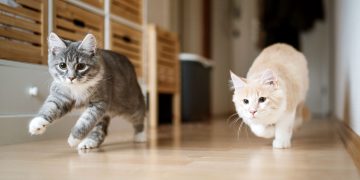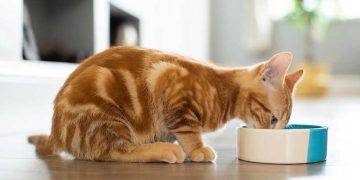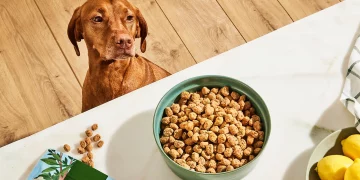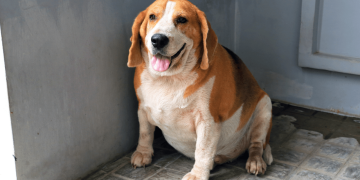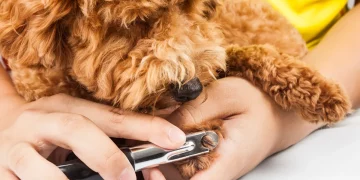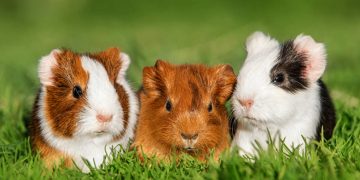Feeding your Dutch Lop rabbit the right diet is crucial for maintaining its overall health, well-being, and longevity. Unlike cats or dogs, rabbits have specific dietary needs that should be carefully met to avoid common health issues like obesity, dental problems, and gastrointestinal disorders. Dutch Lop rabbits, known for their charming personalities and adorable appearance, require a diet tailored to their unique physiology.
In this article, we will discuss everything you need to know about feeding your Dutch Lop rabbit, from the types of food they need, how often they should eat, the best ways to offer their meals, and common feeding mistakes to avoid. By the end of this article, you will have a thorough understanding of how to provide the optimal diet for your Dutch Lop rabbit, ensuring a happy and healthy life for your furry friend.
1. Introduction: Why Proper Feeding is Crucial for Dutch Lop Rabbits
1.1. Understanding the Dutch Lop Rabbit’s Unique Dietary Needs
Dutch Lop rabbits, like all rabbits, are herbivores with a digestive system designed for processing high-fiber plant material. They rely on a continuous intake of fresh hay, vegetables, and some fruits to meet their nutritional needs. Unlike carnivores or omnivores, rabbits have a sensitive gastrointestinal system that can be easily disrupted if their diet is not properly balanced.
Proper feeding can significantly impact the health of your Dutch Lop rabbit. A well-balanced diet promotes optimal digestion, healthy teeth, and a good quality of life, while a poor diet can lead to obesity, digestive issues, and even shortened lifespans.
2. Nutritional Requirements for Dutch Lop Rabbits
2.1. The Basics of Rabbit Nutrition
A proper rabbit diet consists primarily of:
- Hay (70-80%)
- Fresh Vegetables (10-15%)
- Pellets (5-10%)
- Fresh Water
These components should be carefully balanced to meet the Dutch Lop’s nutritional needs, including fiber, protein, vitamins, and minerals.
2.1.1. Importance of Fiber
Fiber is the cornerstone of a rabbit’s diet. It plays a crucial role in:
- Digestive Health: Rabbits need a high-fiber diet to keep their digestive system running smoothly. Fiber helps maintain gut motility and prevents blockages, which can be life-threatening.
- Dental Health: Chewing fibrous food like hay helps wear down the rabbit’s constantly growing teeth and prevents dental problems.
- Weight Management: A fiber-rich diet keeps the rabbit full and satisfied, reducing the likelihood of overeating and obesity.
2.1.2. Avoiding High-Fat Diets
Dutch Lop rabbits, like other rabbits, are prone to obesity, especially when overfed with high-calorie, high-fat foods like commercial pellets or sugary fruits. It’s important to control the amount of pellets and treats you give your rabbit and avoid fatty snacks like nuts, seeds, and processed foods.
3. Hay: The Foundation of Your Dutch Lop’s Diet
3.1. Types of Hay for Dutch Lop Rabbits
Hay is the most important food in a rabbit’s diet, providing the necessary fiber and nutrients. There are different types of hay, and each serves a specific purpose.
3.1.1. Timothy Hay
- Best Option: Timothy hay is the most commonly recommended type of hay for adult rabbits. It comes in three cuts: first, second, and third cut.
- First Cut: Coarse, high in fiber, and low in sugar. It is excellent for digestive health but may be a bit rough for picky eaters.
- Second Cut: Softer, sweeter-smelling, and lower in fiber. This cut is more palatable and typically preferred by rabbits.
- Third Cut: Very soft and mild. This cut is ideal for older or less-active rabbits.
3.1.2. Meadow Hay
Meadow hay is harvested from wild grasses and is high in fiber. It is a great alternative or supplement to Timothy hay, providing variety and natural forage.
3.1.3. Orchard Grass Hay
This hay is softer and sweeter, making it highly palatable for many rabbits, especially those who are fussy eaters. It’s less fibrous than Timothy hay, so it can be mixed in for variety.
3.2. How Much Hay Should You Feed Your Dutch Lop Rabbit?
Your Dutch Lop rabbit should always have unlimited access to hay. You should aim to provide at least 1-2 cups of fresh hay per day for every 2-3 pounds of body weight. Some rabbits may consume more, especially during times of growth, molting, or increased activity.
3.3. Storage and Freshness
Store hay in a cool, dry place to maintain its freshness. Exposure to heat and humidity can lead to mold growth, which can be dangerous for your rabbit. Provide hay in a clean container or a hay rack to keep it off the ground and prevent contamination.
4. Fresh Vegetables: The Next Essential Component of the Diet
4.1. Types of Vegetables to Feed Dutch Lop Rabbits
Fresh vegetables are an excellent source of vitamins and minerals. You should offer your Dutch Lop a variety of fresh vegetables daily. The following are some of the best choices:
4.1.1. Leafy Greens
- Romaine Lettuce: A great source of fiber and moisture. Avoid iceberg lettuce as it is low in nutrients.
- Kale: Rich in calcium, but should be fed in moderation due to its high oxalate content.
- Cilantro: A favorite of many rabbits, providing a healthy dose of vitamins A and K.
- Parsley: High in vitamin C and antioxidants.
4.1.2. Root Vegetables
- Carrots: High in sugar, so offer them in moderation.
- Beet Greens: Good for overall health but also high in calcium, so feed sparingly.
4.1.3. Other Vegetables
- Bell Peppers: Packed with vitamin C, bell peppers are a great treat for your rabbit.
- Broccoli: A good source of fiber and vitamin C, but it should be offered in moderation to prevent gas.
4.2. Vegetables to Avoid
Some vegetables can cause gastrointestinal upset or toxicity in rabbits. Avoid feeding your Dutch Lop the following:
- Iceberg Lettuce: Low in nutrients and can cause diarrhea.
- Onions and Garlic: Toxic to rabbits and can cause serious health problems.
- Potatoes and Tomato Leaves: These can be harmful and should never be fed to rabbits.
4.3. How Much Vegetables Should You Feed a Dutch Lop Rabbit?
A general guideline is to offer 1-2 cups of fresh vegetables per 5 pounds of body weight daily. Make sure to introduce new vegetables gradually to avoid digestive issues and always wash the vegetables thoroughly to remove pesticides.
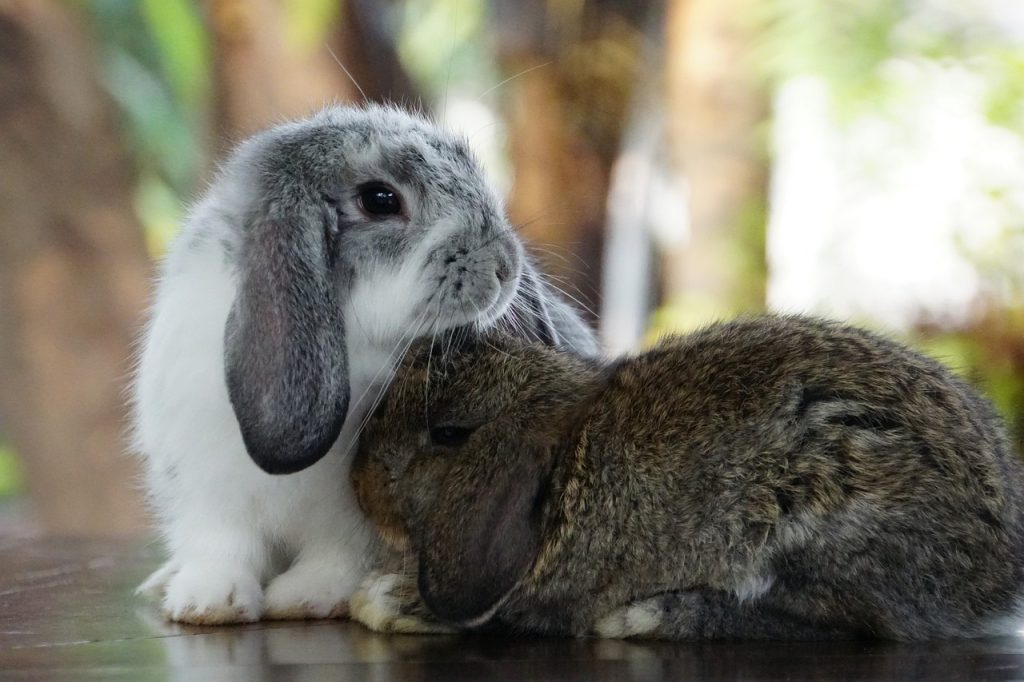
5. Pellets: A Supplementary Food Source
5.1. Choosing the Right Pellets for Your Dutch Lop Rabbit
Pellets are a convenient and supplementary food source that should make up a smaller portion of your rabbit’s diet (around 5-10%). Look for high-quality, fiber-rich pellets that are low in protein and fat. Avoid pellets with added sugar, dried fruit, or colorful artificial ingredients.
5.1.1. Fiber Content
Choose pellets that are at least 18% fiber. This ensures that the pellets contribute to healthy digestion and dental health. The pellets should also contain a mix of hay ingredients like Timothy hay to ensure a balanced diet.
5.2. How Much Pellets Should You Feed?
For a Dutch Lop rabbit, about ¼ cup of pellets per 5 pounds of body weight is a suitable amount. Too many pellets can lead to obesity, so they should be used primarily as a supplement to hay and vegetables.
6. Fresh Water: Essential for Health
6.1. How Much Water Does a Dutch Lop Rabbit Need?
Fresh water is crucial for your rabbit’s hydration. A Dutch Lop rabbit should have access to clean, fresh water at all times. Rabbits can drink up to 100-150 milliliters of water per kilogram of body weight per day. Make sure your rabbit’s water bowl or bottle is always full and clean.
6.2. Water Bottles vs. Water Bowls
Some owners prefer using water bottles with sipper tubes, while others opt for water bowls. Both options can work well, but be sure that the water bottle’s sipper tube does not clog, and the bowl is heavy enough to prevent tipping.
7. Treats and Snacks for Dutch Lop Rabbits
7.1. Choosing Safe Treats
Treats can be a fun way to bond with your Dutch Lop rabbit, but they should be offered in moderation. Here are some safe treats to consider:
- Fresh Fruit: Apples, strawberries, and bananas are great occasional treats. Limit fruit to small portions due to its sugar content.
- Herbs: Fresh mint, basil, or dill can be a delightful treat for your rabbit.
- Hay-Based Treats**: Some rabbits enjoy hay-based treats or chew sticks that encourage healthy chewing habits.
7.2. Avoiding Harmful Snacks
While it may be tempting to share human food, it’s important to avoid giving your rabbit sugary snacks, chocolates, or salty foods, as these can cause serious health problems.
8. Common Feeding Mistakes to Avoid
8.1. Overfeeding Pellets
One of the most common mistakes rabbit owners make is overfeeding pellets. Pellets should be treated as a supplement, not the main part of the diet.
8.2. Not Providing Enough Fiber
Dutch Lop rabbits require a high-fiber diet to ensure healthy digestion. Failing to provide enough hay can lead to gastrointestinal problems, including gut stasis and bloating.
8.3. Feeding Too Many Sugary Fruits
Fruits should only be given occasionally, and in small amounts. Too many fruits can lead to obesity and digestive issues.
9. Conclusion: Feeding Your Dutch Lop Rabbit for Optimal Health
Feeding your Dutch Lop rabbit a balanced, fiber-rich diet is key to their overall health and well-being. By providing unlimited access to high-quality hay, a variety of fresh vegetables, a moderate amount of pellets, and plenty of fresh water, you will ensure that your rabbit lives a long, happy, and healthy life. Avoid overfeeding treats and ensure that their diet is appropriate for their age, size, and activity level.
By following the guidelines in this article, you’ll have the knowledge needed to feed your Dutch Lop rabbit the right way, helping them thrive as a beloved member of your family.






